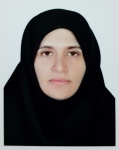| Authors | Seyed Naser Raisossadat,Yazdi-Moghadam M.,,Felix Schlagintweit,Maryam Mortazavi Mehrizi |
|---|
| Journal | Cretaceous Research |
|---|
| Page number | 1-14 |
|---|
| Serial number | 2023 |
|---|
| Volume number | 151 |
|---|
| IF | 1.904 |
|---|
| Paper Type | Full Paper |
|---|
| Published At | 2023 |
|---|
| Journal Grade | ISI |
|---|
| Journal Type | Electronic |
|---|
| Journal Country | Iran, Islamic Republic Of |
|---|
| Journal Index | JCR،Scopus |
|---|
Abstract
The biostratigraphic and palaeogeographic aspects of the Lower Cretaceous “Orbitolina limestone” of the eastern Cimmerian block in Central Iran were analyzed, providing the first high resolution dating of this unit in the Lut Block. The fossil assemblages are dominated primarily by orbitolinid larger benthic foraminifera. The identified orbitolinids of the studied section, including Palorbitolina lenticularis (Blumenbach), P. ultima Cherchi and Schroeder, Palorbitolinoides pileus (Fossa-Mancini), Praeorbitolina cormyi Schroeder, and P. wienandsi Schroeder, were observed in pack-/grainstone facies. Based on the stratigraphic value of the index orbitolinids, an age of late early Aptian is constrained for the orbitolinid bearing unit of the study area. The results from Central Iran, palaeobiogeographically located at the northern margin of the Neo-Tethys, suggest that the previous inferred restriction of the Praeorbitolina/Palorbitolinoides Association to the southern margin of the Neo-Tethys during the Lower Cretaceous has to be corrected.
Paper URL
